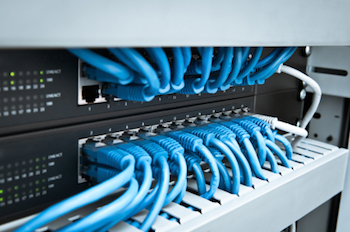
If you run a small to medium size business, technology is probably one of the top frustrations you deal with each year. Not only do you have to keep up with the latest device – would your sales team operate better with tablets over laptops – you also have to stay on top of software upgrades and security updates.
In the end, every user’s technology is different, and as an administrator, you often find yourself having little control over the variety of operating systems and applications running throughout the company. Troubleshooting to you doesn’t just mean downloading and installing the latest security patch, it also means significant time researching what is on the terminal, verifying what the system requires, and only then downloading the necessary upgrades and updates.
And this isn’t a once in a blue moon process; this is a regular routine.
All of this has led to many companies looking for alternatives. And depending on the size and structure of your business, Virtual Desktop Infrastructure, or VDI integration may be the answer.
VDI is based on a thin client computing model. A virtual desktop machine on the server side is used to handle all operating system related tasks, application processing, and storage; each endpoint PC simply acts as a workstation.
There are a wealth of benefits to moving to a VDI approach.
Extends PC Lifecycle
Because each endpoint PC acts as little more than a workstation, with little to no real modifications to keep it running, the life of a PC can be pushed from two to three years to five or more. That can mean significant savings over time, especially in larger offices with a lot of end users.
Requires Lower Grade Equipment
When it is time to purchase new PCs, a company can do so at significant savings. Because the focus won’t have to be put on disk or memory space, or processing capacity, endpoint units can be purchased based on price instead of needs. In many cases, lower hardware requirements also mean lower energy usage, which can help you reduce other costs throughout your office as well.
Less Downtime
When a conventional PC fails, it puts both the technician and the employee at a disadvantage. A technician has to stop all other processes and immediately work on the PC. The employee loses the ability to perform until repairs are made. Which can put both into crisis mode mentality. When a thin client PC fails, it’s a simple case of replacing the terminal, and work can continue immediately. In addition, if a PC can’t be swapped out immediately, he or she can still login from other endpoints, and continue working as required.
Superior Administration
One of the biggest reasons companies move to a VDI platform is because of control. Management happens almost entirely at the server level. If a new desktop is needed, an administrator can simply set up a thin client PC in the new workstation, and connect it with a pre-established virtual image from the server side. Admin can also control many other functions from the server side unit, including deployment of new software, patches and upgrades, antivirus, antispyware and other security products, and even control what an end user can download and access, and what they can’t, keeping the entire system safer overall.
Even with so many benefits to moving to a VDI platform, there are a few negatives to be aware of as well.
Bandwidth
Depending on the type of company you run, how many end users you have, and the functionality each end user needs, bandwidth can be one of the largest drawbacks. This can especially come in to play if you have hundreds, even thousands of PCs pulling data and refreshing screens as they continue on with the day. Graphics can be one of the biggest drains, and may require upgraded hardware and network upgrades to support use. Though systems today are designed with the needs of today’s printers, scanners, audio, video, and other USB device needs, it is important to keep all of this in mind as your system is developed.
Server Redundancy
Imagine an office with 50 thin clients and one server. If all are hosted on the one server and the server fails, instant panic. To avoid this scenario, it is important to realize that for safety reasons, server clustering, redundant connectivity and other tactics are essential for keeping office technology running at its best.
Storage
Because all processing is handled centrally, all application data is stored centrally as well. Whatever storage space was allocated to each end user in original PC format will also be required on the server with this new platform. Which means if the average PC in your office stored 100 GB of information and you have 100 thin clients in the office, you’ll need at a minimum 10,000 GB (or 10 TB) in the data center. Too many administers cut themselves short in the planning process, and quickly realize they are out of space, even with basic functionality.
Historically, with the complexity and server requirements necessary to support the VDI infrastructure, only mid-to0large size companies could practically implement VDI. Fortunately, the huge explosion of cloud providers has made the implementation and affordability of VDI practical and attractive for even small companies. It’s more than likely that the next generation of business users will (with companies of more than 5-10 users) will all employ VDI. As always, call me if you want to see how VDI or any other technologies can strategically work in your company.


